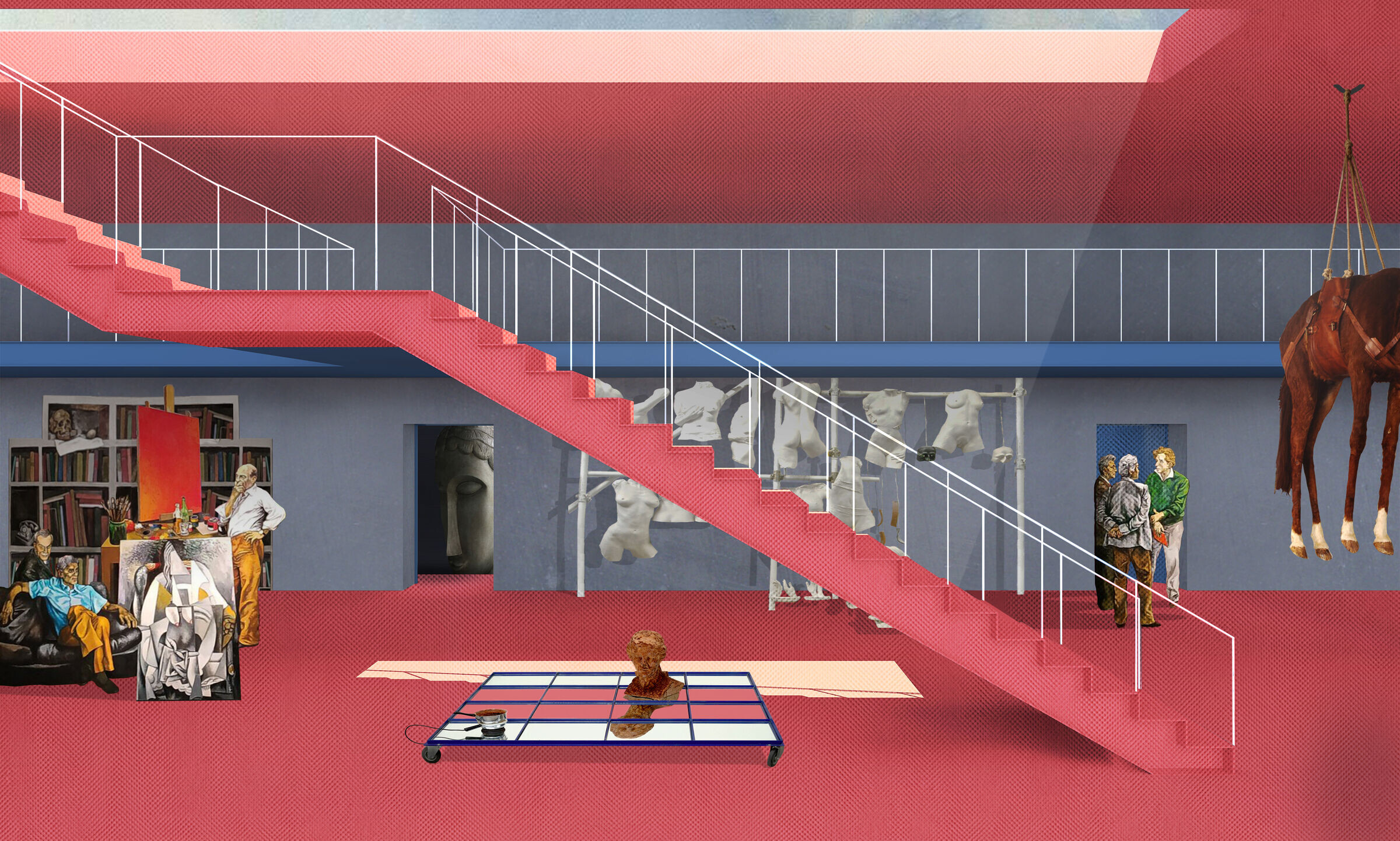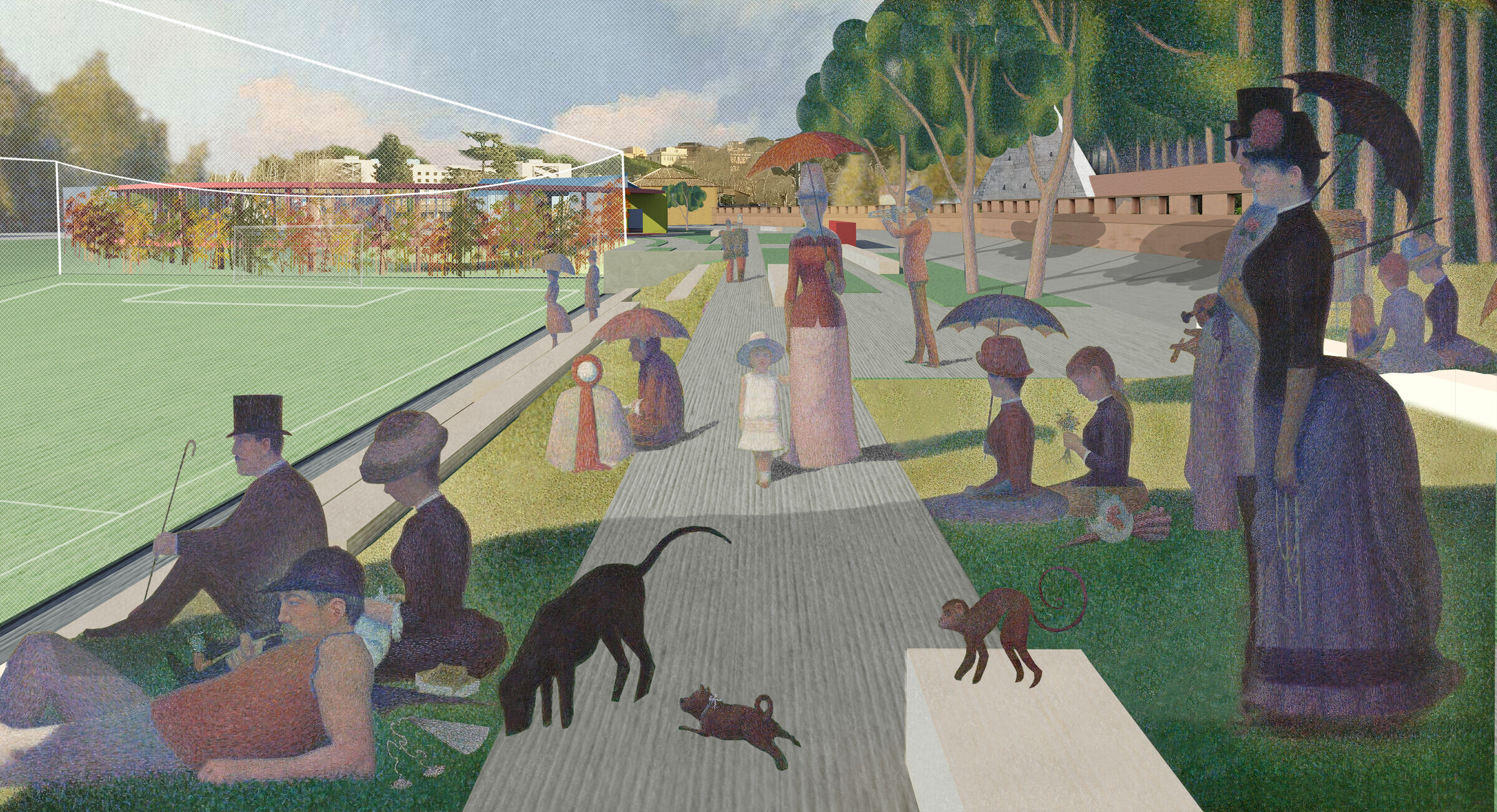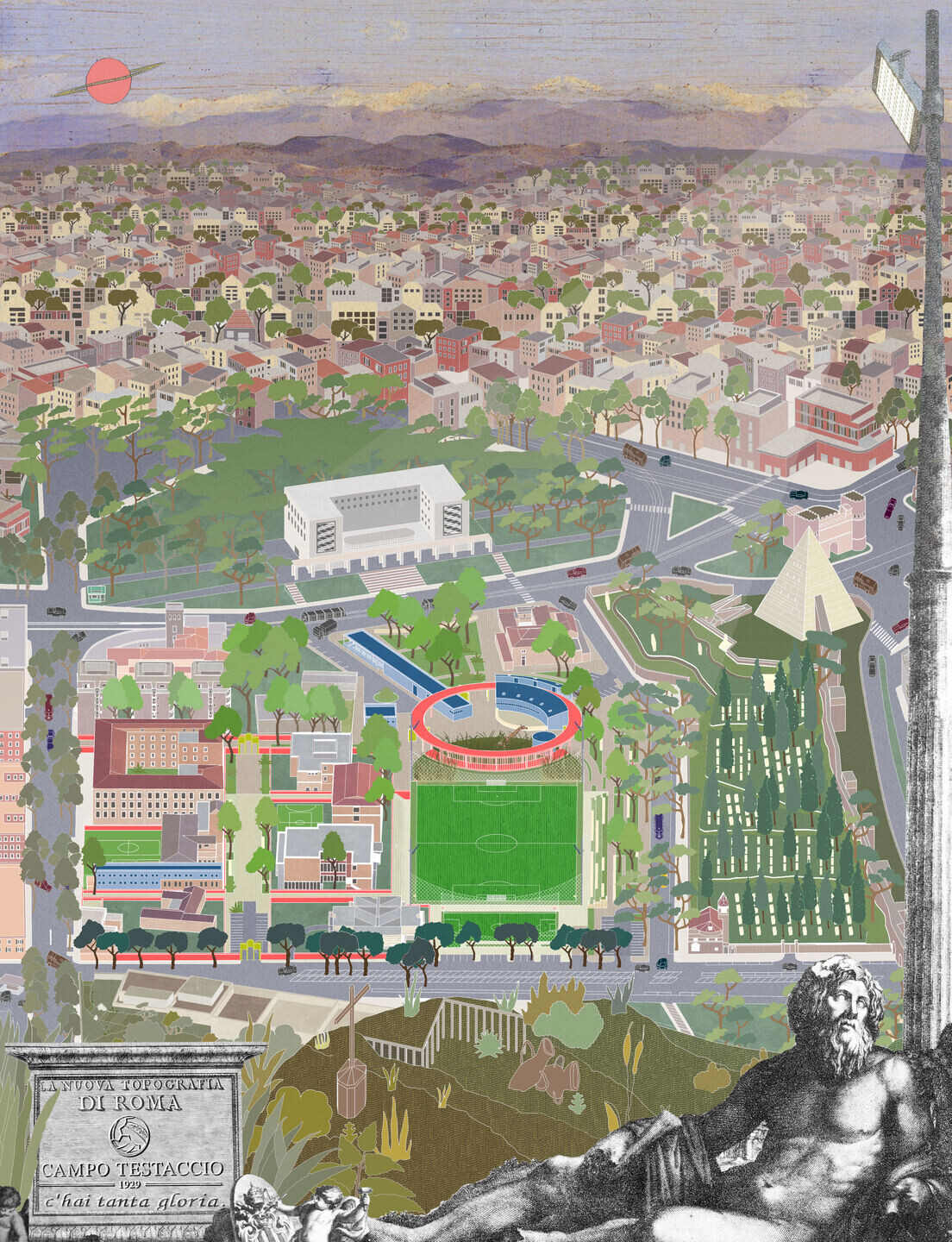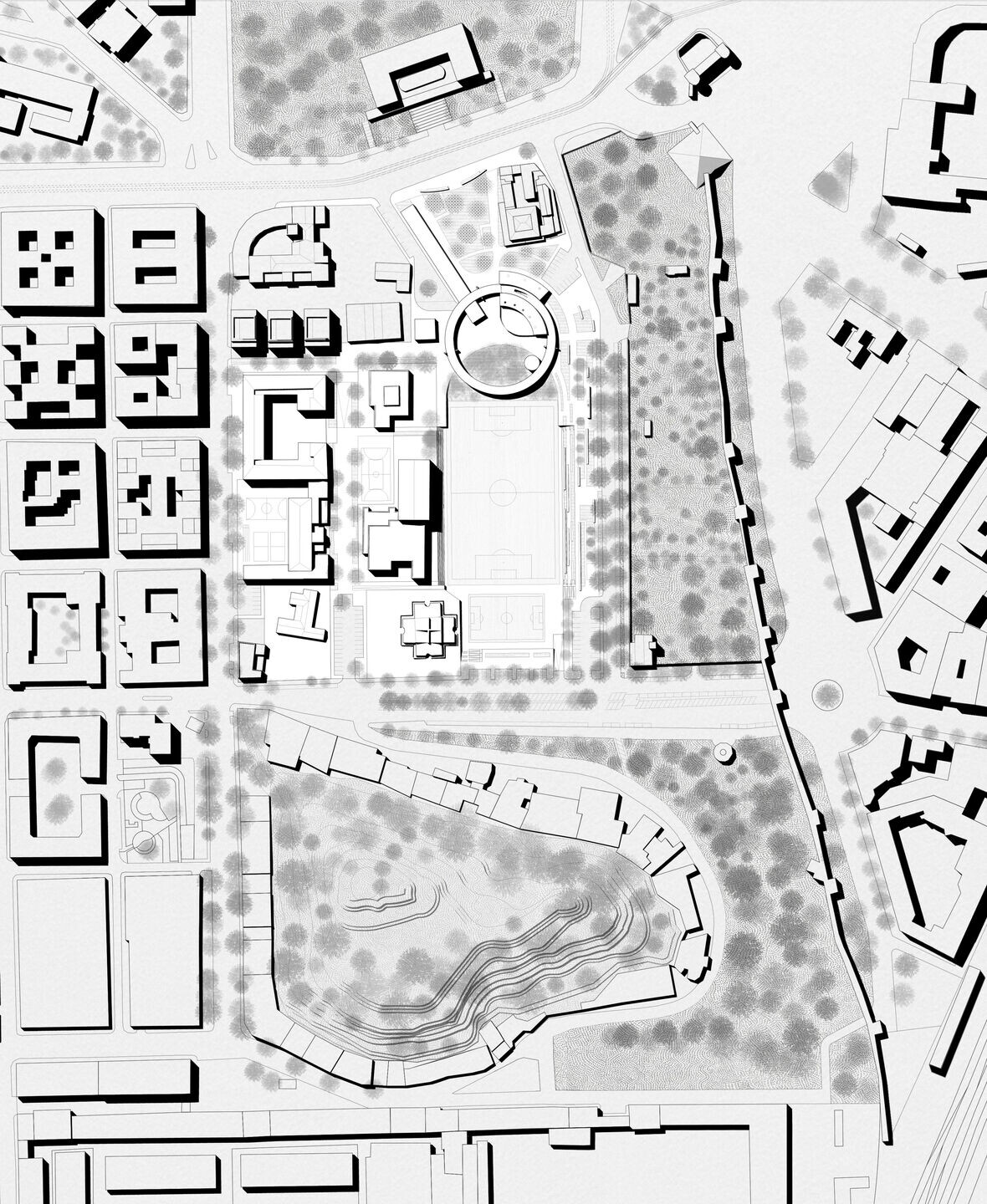A certain liturgy, typical of port areas – make landfall, custody, sorting – still seems to remain in the neighborhood today, even in the strategies that guided the project.
The intervention area is crucial for Rome, rich in historical, architectural, and naturalistic interest, suitably connected by urban public transport. Despite its central position, this part of the city has never been integrated with the surrounding context and today the main existing axialities do not combine with the archi- tectural emergencies that have developed over the years.

In order to introduce immediately the sporting function, the football field is designed to be located exactly where it once was, and then to be expanded when the neighboring areas are free from squatting.
The red ring catalyzes a series of confetti buildings. It’s an equipped enclosure, conceived as diaphanous, optimistic, capable of being crossed. The new round portico delimits an area where modest metaphysical architectures activate a re-functionalization of the fabric.
The confetti become custodians of a series of tracks that rest on the area and orbit around it.
The artist’s ateliers adapt organically to the curvilinear shape of the disk, like the spontaneous volumes of the former Caselli village. The renewed Bocciofila Piramide becomes a longitudinal regulatory element, which levels the powder keg, inviting through a reservoir – the new Piazza Prati del Popolo Romano – to explore the area.

The Urban Lab 800 dialogues with the nineteenth-century fabric behind Testaccio, a landing point for those coming from the north. The cylindrical kiosk, immersed in the rushes, pays homage to the precarious architecture of the nomad camps, the bars of the suburban soccer fields, the artist’s cafes.
The confetti, which have become custodians (and vice versa), can therefore be understood as transitional objects; they will help Testaccio to proceed in this new chapter of its urban history.
























